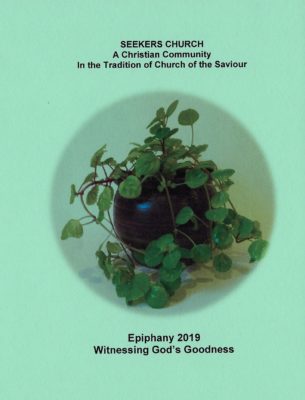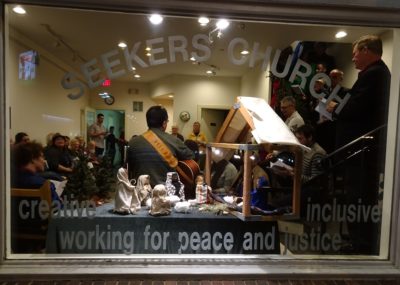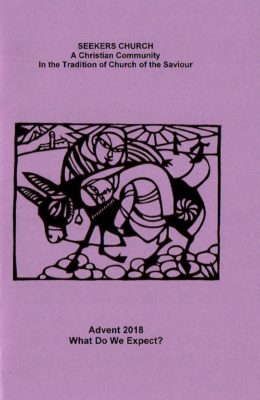Sermons
Seekers recognizes that any member of the community may be called upon by God to give us the Word, and thus we have an open pulpit with a different preacher each week. Sermons preached at Seekers, as well as sermons preached by Seekers at other churches or events, are posted here, beginning with the most recent.
Click here for an archive of our sermons.
Feel free to use what is helpful from these sermons. We only ask that when substantial portions are abstracted or used in a written work, please credit Seekers Church and the author, and cite the URL.
.wp-show-posts-columns#wpsp-4136 {margin-left: -2em; }.wp-show-posts-columns#wpsp-4136 .wp-show-posts-inner {margin: 0 0 2em 2em; } Good Morning. Today, our gospel reading is from Luke, who describes the scene when Jesus went to the Jordan River to be baptized by John, his cousin. When the ceremony was over, the Holy Spirit descended upon Jesus embodied in a dove. We have completed the Christmas season, and skipped to Jesus’ adulthood—this is his christening—his transition from acting as the son of God to his full ministry; it is his anointing. But what did that baptism really mean? Today we celebrate Epiphany, the 12th day of Christmas, and the coming of the wise men with their gifts of gold, frankincense and myrrh. Only Matthew tells the story of the wise men, astrologers who were the scientists of the ancient world. It’s an expansion of Isaiah’s prophecy — that foreign rulers would come to honor the Light of God which will arise from this people. From foreign countries, Isaiah says, kings with come with camels, bringing gold and frankincense. To those tangible signs of tribute, Matthew adds myrrh – a healing ointment used for burial. With that addition, Matthew shows his readers the symbols for Jesus’ life, death and resurrection: gold, myrrh and frankincense. I could speak more about Matthew’s midrashic expansion of the Jewish lectionary cycle, but we’ll save that for another day. INTRODUCTION In this week’s Scripture readings we’re already down the road from the manger in Bethlehem. In two of the lessons we get a glimpse of the nurturing power of parental love. And the other lessons invite us to weave robes of that healing love to help heal a hurting world. In the Hebrew Scripture reading we have Hannah patiently making a new priestly robe for her son Samuel, each year, as he continues to serve in the temple. In the Epistle reading Paul encourages us to clothe ourselves in robes of love, suggesting a variety of things that might be woven into those robes. And the Gospel lesson gives us a brief glimpse of Jesus at age 12, responding already to God’s prophetic call, yet still willing to honor his loving parents. It is sometimes hard to remember how challenging the story of Christmas must have been for those who were actual participants. As I reread this powerful but familiar story I was struck by three things that each of the participants in this story had to face: First, something very unexpected happened, which then caused them to have to face their fears, and as a result they had to journey from what was known and safe to a place of vulnerability and unfamiliarity. In Advent, the future and the past crash into one another as we approach the coming of Christ into the world. In the first week, Jesus warned us of great trials and tribulations, saying, “Nation will rise against nation, and kingdom against kingdom. There will be great earthquakes, famines and pestilences in various places, and fearful events and great signs from heaven” [Luke 21:10-11] before the eventual coming of God’s eternal righteousness and peace.A Sermon on Baptism by Cynthia Dahlin
 January 13, 2019
January 13, 2019The Baptism of Jesus
“Epiphany” by Marjory Bankson
 January 6, 2019
January 6, 2019The Feast of the Epiphany
“Dressed in Love” by Peter Bankson
 December 30, 2018 Christmastide
December 30, 2018 Christmastide2018 Christmas Eve Homily by Brenda Seat
 December 24, 2018
December 24, 2018“Waiting” by Deborah Sokolove
 December 23, 2018
December 23, 2018The Fourth Sunday of Advent